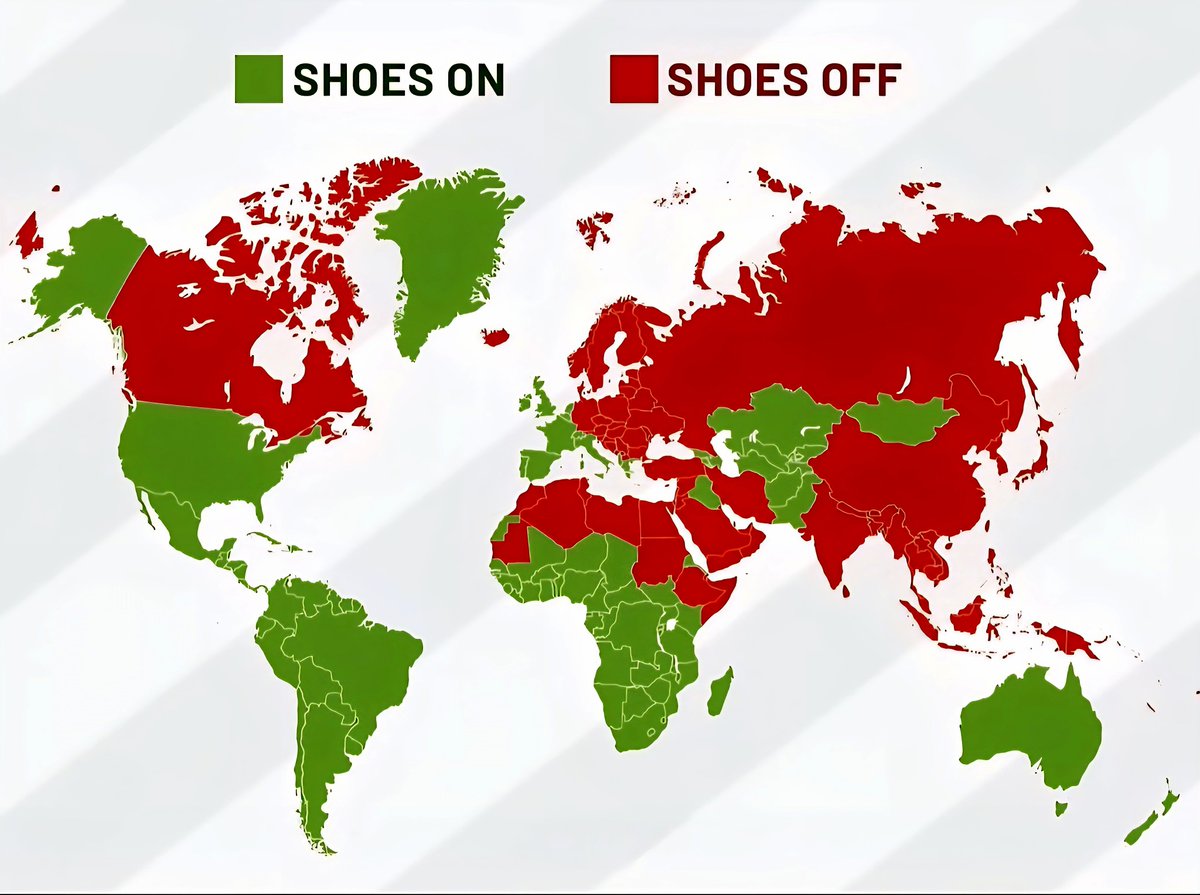Select Language:
Shoes-Off Culture: How Homes Around the World Manage Footwear Policies
In 2025, the debate over whether to keep shoes on or off inside the house remains a popular topic across cultures and households worldwide. As shown in a recent global map, different countries have distinct traditions and expectations when it comes to footwear in the home. Here are some insights into how various regions approach this practice, providing a closer look at cultural norms and practical reasons behind them.

1. Welcome to Japan: Shoes Off for Cleanliness and Respect
Japan continues to uphold its longstanding tradition of removing shoes at the entrance. This custom stems from a cultural emphasis on cleanliness, respect, and maintaining the sanctity of the home. Visitors and residents alike are expected to switch to indoor slippers once inside, which helps keep floors clean and minimizes dirt spread, especially considering the country’s sensitive environments like tatami mats and wooden floors.
2. The United States: A Mix of Practices Across Households
In the U.S., the approach varies significantly depending on regional and household preferences. Many families prefer shoes-off policies in the house, especially in clean and cozy environments, to prevent dirt and germs from being tracked indoors. However, some households are more relaxed and allow shoes to stay on, particularly when visitors are comfortable with it or for convenience. The diversity reflects broader cultural attitudes towards cleanliness and practicality.
3. European Norms: From Strict to Casual
European countries display a spectrum of practices. Scandinavian countries like Sweden and Norway often favor removing shoes indoors, tied to cleanliness and environmental awareness. Conversely, in parts of Southern Europe, larger homes and different climate considerations may lead to a more relaxed attitude. Nonetheless, many Europeans appreciate the tidiness that shoe removal offers, especially in homes with polished wooden floors or traditional decor.
4. Asian Countries: Deeply Rooted Traditions
Beyond Japan, other Asian nations like South Korea and China also emphasize removing shoes when entering homes. This custom is often reinforced through societal expectations and family habits. In South Korea, for example, many households use indoor slippers to maintain hygiene and show respect for the household space, especially during social gatherings and holidays.
5. Middle Eastern and African Habits: Combining Practice and Hospitality
In several Middle Eastern and African cultures, removing shoes upon entering a home is a sign of hospitality and respect. However, in some regions, it’s common to keep shoes on, especially if the footwear is considered clean or suitable for indoor use. The decision often depends on local climate, traditional practices, and personal preference.
6. Australia and New Zealand: Evolving Norms
Australia and New Zealand tend to follow a pragmatic approach, with many households opting to keep shoes on, especially in outdoor-friendly environments like patios or verandas. Still, a significant portion of residents prefer removing footwear indoors to keep floors clean, reflecting a blended approach influenced by immigrant cultures, urban living, and climate considerations.
7. The Role of Hygiene and Comfort
Across many regions, recent health trends and the ongoing emphasis on hygiene have encouraged more people to adopt shoes-off policies. Removing shoes indoors reduces exposure to mud, bacteria, and allergens, promoting healthier living spaces. Additionally, many find that walking around barefoot or in slippers enhances comfort and relaxation within the home.
8. Practical Considerations and Exceptions
Certain households and professions might have specific rules. Households with children, pets, or elderly residents often enforce shoe-free environments to promote safety and cleanliness. Conversely, homes in colder climates or with concrete floors might have a more lenient approach, considering comfort and practicality.
9. How Travel and Cultural Exchange Influence Norms
Travelers and expatriates often bring their own barefoot or shoes-off habits into new environments, influencing local norms over time. Urban areas with diverse populations tend to showcase a melting pot of traditions, blending different practices into community standards.
Final Thoughts
The map visualizes a fascinating reminder that the question of whether to keep shoes on or off remains deeply embedded in cultural, environmental, and practical factors. As 2025 ushers in new health considerations and international exchanges, evolving norms continue to shape how people perceive cleanliness, hospitality, and personal comfort within their homes. Whether one subscribes to removing shoes for respect or keeps them on for convenience, understanding the customs of other regions fosters greater cultural awareness and mutual respect.







